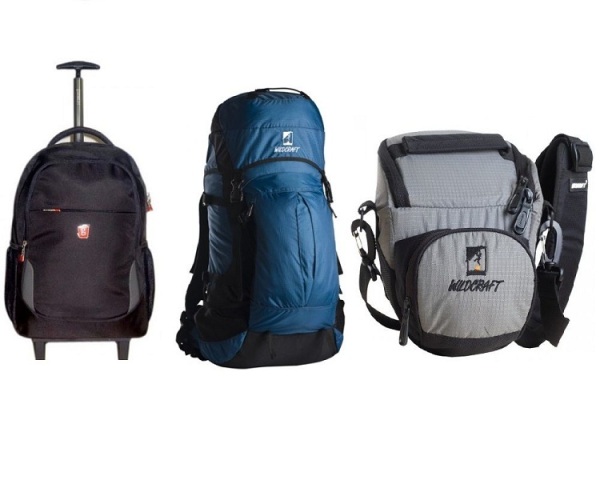All the comforts of a hiking expedition can be brought out by picking the right backpack. Explore this article to discover the different types of hiking backpacks.
Types Of Backpacks
A backpack is the most important requirement for any expedition or trip. And when these trips are carried out outdoors, the hikers are often deprived of the everyday necessities, such as food, drinks, and accommodation. Hence, these comforts have to be carried along, so that the expedition is not interrupted midway. However, it is not possible for you carry all your necessities in modern bag cases, with or without casters, as they only increase your load. Here enters backpacks, which make carrying heavy weight pleasant and not at all tiring. However, finding a good backpack, also known as rucksack, knapsack, packsack, or pack, is not that easy, as you need to extensively research on finding the most comfortable one to make your journey a smooth one. Also, before you pick up a backpack, try on different backpacks and see which one has the most ample space to store all your equipment. Scroll through the lines herein to know the different kinds of hiking backpacks.

Different Kinds Of Hiking Backpacks
Waist Packs
Also referred to as hip packs, fanny packs, or lumbar packs, waist packs comprise of a simple pouch and belt, making them useful for small day hikes. Due to their small size, they are not considered official backpacks but they are better off than the traditional backpacks. The waist pack rests on your waist, thereby balancing the weight at the center of your spine. To avoid the overloaded waist packs to sag off from your body, there are advanced versions that consist of shoulder yokes to enhance the stability.
Hydration Packs
Hydration backpacks are built around a bladder consisting of a drinking tube. While some hydration packs have a bladder and shoulder straps, others include a casing and side pockets to store drinking bottles and other necessities.
Day Packs
Small-sized, light-duty backpacks, day packs are the best backpacks for shorter hikes. They have broad shoulder straps with no hip belts. However, with the increase in the size of the day pack, the need for a hip belt becomes necessary. Also, some large-sized day packs are built with small hip belts. Further, you will also find day packs with chest straps to prevent the weight of the pack pulling the shoulder straps back. For easy access, certain day packs feature mesh outer pockets for keeping wet clothes and other gear.
Midsize Packs
For hikes that last longer than one day, midsize packs are the best ones to pick if you do not have heavy equipment to carry. Else, it is best to use a midsize pack for a short hike if you wish to carry a lot of stuff or heavy gear, such as cameras, binoculars, and books.
Expedition Packs
Expedition packs are designed to carry lot of light and heavy gear that would last for several weeks. These heavy-duty carriers feature a broad waist belt to spread out the load weight between shoulders and hips, thereby easing the travel. Some expedition packs also include a lumbar pad to support and protect the lower spine from getting injured while carrying heavier load.
Internal Frame Backpacks
Majority of the backpacks are designed with an internal frame to provide a better posture and comfort while hiking on different topographies, especially in snow and rough terrains. The main purpose of including an internal frame in a backpack is to keep the load intact while climbing rather than causing your gear to shift and move on your back. Internal frame backpacks are the best backpacks for frequent hikers and travelers.
External Frame Backpacks
Cheaper than internal frame backpacks, these external frame backpacks are the best gear for beginners. They are designed to provide maximum support to hikers with heavy load. However, these backpacks have one disadvantage. They can cause the gear to move and shift from place while traveling or hiking, thereby making your journey uncomfortable.
See also
More from iloveindia.com
- Home Remedies | Ayurveda | Vastu | Yoga | Feng Shui | Tattoos | Fitness | Garden | Nutrition | Parenting | Bikes | Cars | Baby Care | Indian Weddings | Festivals | Party ideas | Horoscope 2015 | Pets | Finance | Figures of Speech | Hotels in India : Delhi | Hyderabad | Chennai | Mumbai | Kolkata | Bangalore | Ahmedabad | Jaipur
- Contact Us Careers Disclaimer Privacy Policy Advertise With Us Lifestyle Sitemap Copyright iloveindia.com. All Rights Reserved.



